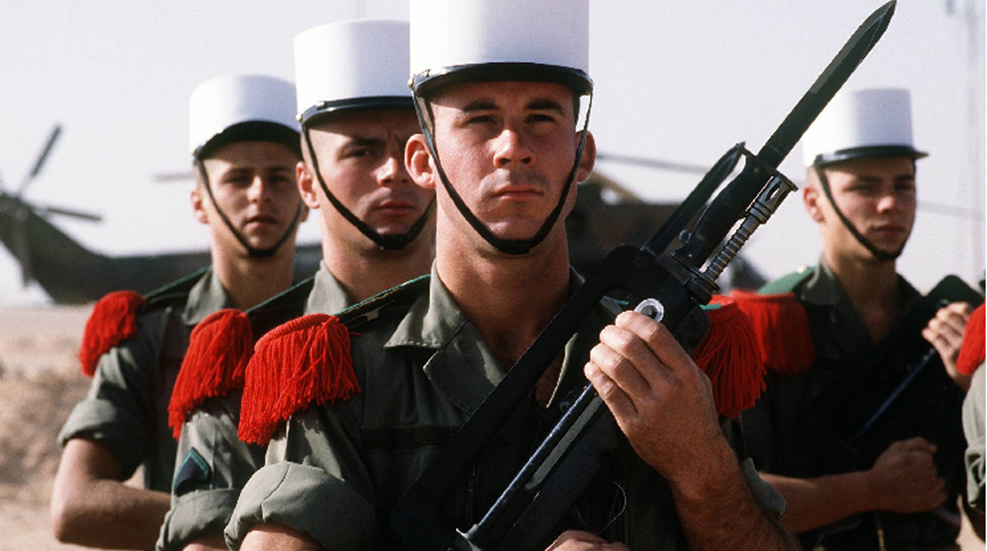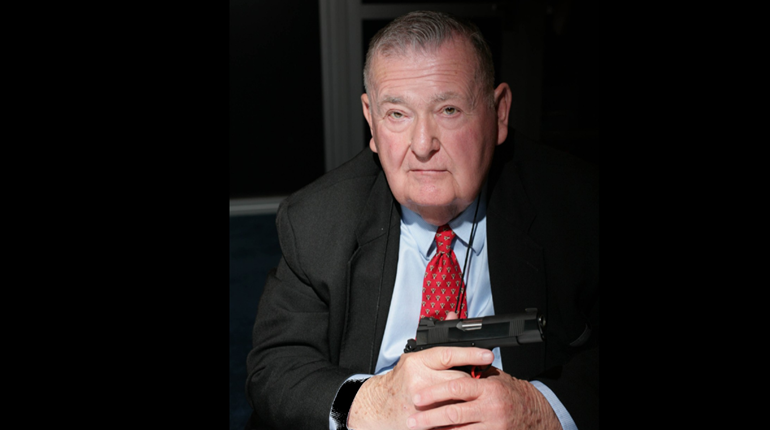** When you buy products through the links on our site, we may earn a commission that supports NRA's mission to protect, preserve and defend the Second Amendment. **

It has happened to Americans more than once over the years. Traditionally and historically, a defeat of major proportions often decides something, as when the Confederacy lost to the Union. The principles that drove the southern states to war were no longer applicable to any part of the nation. But in a completely different way, a defeat can sometimes crystallize the participants into greater effort. And sometimes, that process can, in effect, change history.
When a relative handful of Texians and Tennesseans forted up at a complex of buildings in San Antonio, TX, they faced overwhelming numbers of professional soldiers in Santa Ana’s army. After a valiant fight that left the Mexican Army badly damaged, the Texians were overrun and slaughtered, but they bought Sam Houston enough time to build an Army and come back strong. This defeat at an old church in a dusty western town was avenged to the battle cry of “Remember the Alamo!”
Fast forward over a tumultuous century to a sleepy Sunday morning on a tropical island. U.S. Navy ships were at anchor in harbor and their crews were enjoying a quiet day of rest. There appeared enemy airplanes that caught the Pacific Fleet unaware and inflicted tremendous damage. The defeat at Pearl Harbor was the catalyst that hurled America into a raging conflict and eventually advanced the Republic to become the undisputed leader of the Free World. When it was resolved less than four years later, it was done to the drumbeat of a familiar credo—“Remember Pearl Harbor!”
It saddens me greatly to reflect on the fact that the liberal media reports no such Yankee response to the activities of 9/11. In my view, we haven’t even begun playing catch-up for that one.
It is early April as I write this, a time when I often reflect on personal milestones, as well as historical events that have somehow caught my fancy. One of them is yet another defeat that turned into a long-term victory of sorts. In this case, the manner of the defeat defined the battle doctrine—indeed, the very soul—of a famous fighting force.
It happened on the last day of April in 1863 in the Mexican village of Camerone. When Maxmillian of Austria was ordained Emperor of Mexico, the French sent thousands of troops to help him “convince” Mexicans they really needed a European ruler. Considerable fighting ensued, and by early spring of that year, French troops found themselves defending the capitol and a narrow corridor leading to the seaport of Vera Cruz. Part of that force was two infantry battalions of the French Foreign Legion, a relatively untested organization of non-French volunteer soldiers. Formed in 1831, the Legion was conceived as a politically expedient force, but it grew to be the cutting-edge tool of the French Empire. In 1863, the Legion had some campaigning behind it but had yet to perform in a fashion that gave it a reputation.
That changed dramatically with the events of April 30, 1863. A small company of Legionnaires was assigned to escort a supply train to the city of Puebla. There was considerable possibility of contact with Mexican forces, so an experienced officer named Jean Danjou was placed in command. His force was small—63 men and two other volunteer officers. Just past the village of Camerone, Capitaine Danjou encountered a large force of Mexican cavalry, some 700 to 800 horsemen, and the battle was joined. The Mexicans quickly got the upper hand and began to inflict heavy casualties. Danjou began an orderly withdrawal back to the hacienda. Enemy fire was heavy, but Danjou managed to get some 40-odd of his men back to that farmhouse, where they barricaded themselves in. About this time, another 1,200 Mexican infantrymen arrived on the scene and joined the attack against the surrounded Legionnaires.
The siege of the little force continued into the afternoon, and the Legionnaires’ strength gradually dwindled to a mere handful. Danjou fell, and ammo ran low. The Legionnaires’ fight had been an epic one, but the outcome was not in doubt. At the end, the last officer ordered the remaining six men to fix bayonets and led them in a charge out of the hacienda—and into history.
The Mexican commander stopped his troops from completing the massacre; three Legionnaires survived. They were allowed to keep their arms and recover the body of their commander, Capitaine Danjou. He had lost his hand in an earlier battle and had been fitted with a carved wooden one. It was delivered to Legion headquarters and preserved forever. The word “Camerone” was embroidered on the Legion colors, and the idea of fighting to the end remains the combat ideology of the Legion to this day. From the ashes of a violent defeat so many years ago, there is the present resolve of one of the world’s most famous fighting units.
On April 30, Danjou’s hand was taken from its resting place in the Museum of the Legion at Aubagne, in southern France. It was carried to the field of honor at Legion Headquarters and paraded before assembled Legionnaires to remind them of the tradition of loyalty unto death. It is a tradition of a unit that goes about its business with fightin’ iron.
When a relative handful of Texians and Tennesseans forted up at a complex of buildings in San Antonio, TX, they faced overwhelming numbers of professional soldiers in Santa Ana’s army. After a valiant fight that left the Mexican Army badly damaged, the Texians were overrun and slaughtered, but they bought Sam Houston enough time to build an Army and come back strong. This defeat at an old church in a dusty western town was avenged to the battle cry of “Remember the Alamo!”
Fast forward over a tumultuous century to a sleepy Sunday morning on a tropical island. U.S. Navy ships were at anchor in harbor and their crews were enjoying a quiet day of rest. There appeared enemy airplanes that caught the Pacific Fleet unaware and inflicted tremendous damage. The defeat at Pearl Harbor was the catalyst that hurled America into a raging conflict and eventually advanced the Republic to become the undisputed leader of the Free World. When it was resolved less than four years later, it was done to the drumbeat of a familiar credo—“Remember Pearl Harbor!”
It saddens me greatly to reflect on the fact that the liberal media reports no such Yankee response to the activities of 9/11. In my view, we haven’t even begun playing catch-up for that one.
It is early April as I write this, a time when I often reflect on personal milestones, as well as historical events that have somehow caught my fancy. One of them is yet another defeat that turned into a long-term victory of sorts. In this case, the manner of the defeat defined the battle doctrine—indeed, the very soul—of a famous fighting force.
It happened on the last day of April in 1863 in the Mexican village of Camerone. When Maxmillian of Austria was ordained Emperor of Mexico, the French sent thousands of troops to help him “convince” Mexicans they really needed a European ruler. Considerable fighting ensued, and by early spring of that year, French troops found themselves defending the capitol and a narrow corridor leading to the seaport of Vera Cruz. Part of that force was two infantry battalions of the French Foreign Legion, a relatively untested organization of non-French volunteer soldiers. Formed in 1831, the Legion was conceived as a politically expedient force, but it grew to be the cutting-edge tool of the French Empire. In 1863, the Legion had some campaigning behind it but had yet to perform in a fashion that gave it a reputation.
That changed dramatically with the events of April 30, 1863. A small company of Legionnaires was assigned to escort a supply train to the city of Puebla. There was considerable possibility of contact with Mexican forces, so an experienced officer named Jean Danjou was placed in command. His force was small—63 men and two other volunteer officers. Just past the village of Camerone, Capitaine Danjou encountered a large force of Mexican cavalry, some 700 to 800 horsemen, and the battle was joined. The Mexicans quickly got the upper hand and began to inflict heavy casualties. Danjou began an orderly withdrawal back to the hacienda. Enemy fire was heavy, but Danjou managed to get some 40-odd of his men back to that farmhouse, where they barricaded themselves in. About this time, another 1,200 Mexican infantrymen arrived on the scene and joined the attack against the surrounded Legionnaires.
The siege of the little force continued into the afternoon, and the Legionnaires’ strength gradually dwindled to a mere handful. Danjou fell, and ammo ran low. The Legionnaires’ fight had been an epic one, but the outcome was not in doubt. At the end, the last officer ordered the remaining six men to fix bayonets and led them in a charge out of the hacienda—and into history.
The Mexican commander stopped his troops from completing the massacre; three Legionnaires survived. They were allowed to keep their arms and recover the body of their commander, Capitaine Danjou. He had lost his hand in an earlier battle and had been fitted with a carved wooden one. It was delivered to Legion headquarters and preserved forever. The word “Camerone” was embroidered on the Legion colors, and the idea of fighting to the end remains the combat ideology of the Legion to this day. From the ashes of a violent defeat so many years ago, there is the present resolve of one of the world’s most famous fighting units.
On April 30, Danjou’s hand was taken from its resting place in the Museum of the Legion at Aubagne, in southern France. It was carried to the field of honor at Legion Headquarters and paraded before assembled Legionnaires to remind them of the tradition of loyalty unto death. It is a tradition of a unit that goes about its business with fightin’ iron.





































